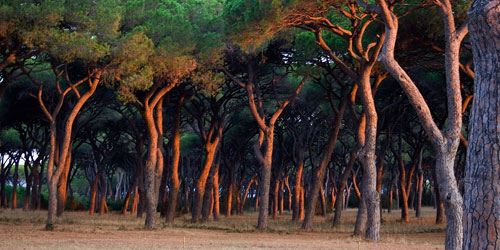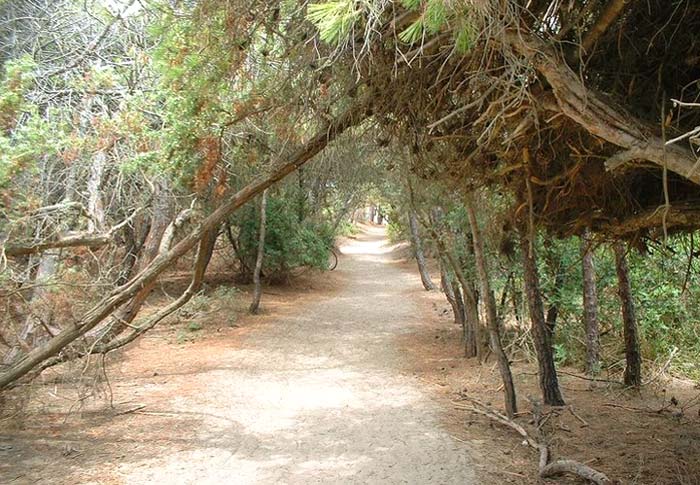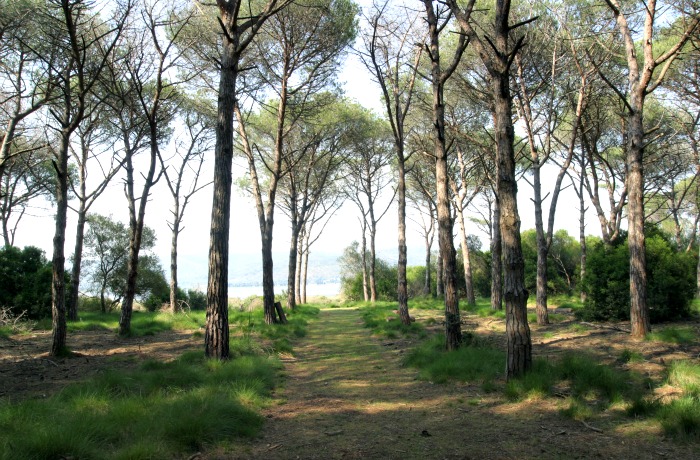
Pineta della Feniglia – Reserve of Feniglia
This post is also available in:
 Italiano (Italian)
Italiano (Italian)
La Feniglia, located in the municipality of Orbetello, in the province of Grosseto, is a “tombolo” (a “sandbar”) that connects Ansedonia hill to the east and Mount Argentario to the west. It runs for about 3.7 km, covering an area of 1.171 acres.
This Reserve was established in 1971: cutting the original Mediterranean forest and the intensive grazing had created several health problems in the XIX century; the sands carried by the winds had ended up in the lagoon, dried it up and favoured a large humid area infested by mosquitoes and malaria.
In 1910, the Feniglia area became part of the National Forestry Property, and after a year the reforestation works on the dunes began. Over the span of 50 years, about 1.136 acres have been reforested mostly with stone pines and using those very plant nuts.
The reserve is crossed by two dirt paths closed to traffic, which run perpendicularly with other minor trails. The main one, built between 1928 and 1940, goes across a pine forest of domestic and maritime pines, while the other runs along the coast of the lagoon.
FLORA
Feniglia is divided into three main sections that run along the whole Reserve: the protection area facing the sea, with typical sand dune vegetation, the central strip – the largest – featuring the maritime and domestic pine forest and used for the collection of pine nut, and the stretch of land bordering the Orbetello lagoon, where broad-leaved trees are mixed with pine.
The first section is the richest: there’s heather, sea lily, helichrysum, ammophilus, juniper, maritime pines, tamarisks, mastic trees, phillyrea, sand clovers, rosemary, sarsaparillas, and asparagus. The second strip is very important for the collection of stone pine seeds (pine nuts) and pine resin. In the third section, there are few domestic pines and the vegetation is scarcer due to the variations in the level of the lagoon.
FAUNA
The main animal of the Reserve is the fallow deer, introduced around 1954 with 8 specimens, two males and six females, with the aim of limiting the spread of black locust during the reforestation. There are also wild boars, foxes, badgers and small rodents. Among the birds, there are turtle doves, woodpeckers, hoopoes and some nocturnal birds of prey.
This post is also available in:
 Italiano (Italian)
Italiano (Italian)
Contatti
Follonica(GR)




